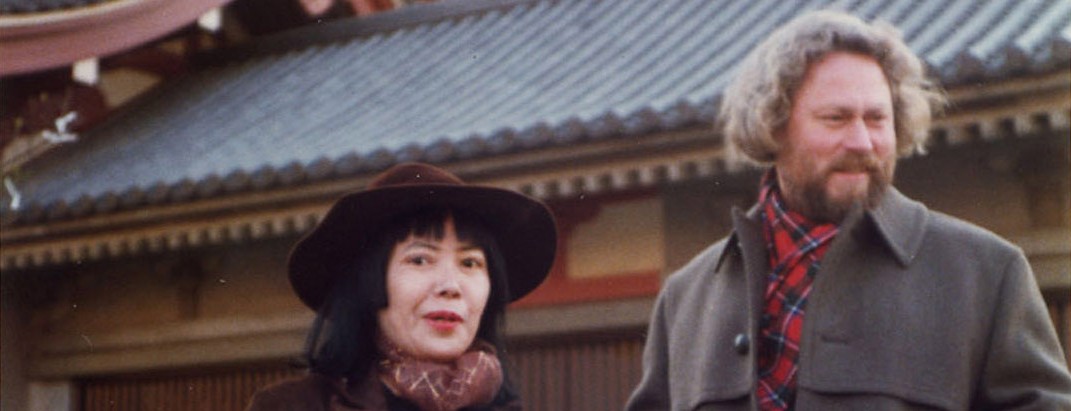

The fall of 1959 was significant for both Yayoi Kusama and Donald Judd; Kusama had her first solo show in New York City in at the Brata Gallery in October and Judd was hired to write reviews for ARTnews in September. Although, as Judd noted, “I wrote criticism as a mercenary and would never have written it otherwise,” the job allowed him to engage critically with some of the most interesting work of the early 1960s. In his second month on the job, Judd reviewed Kusama’s solo show at Brata Gallery.
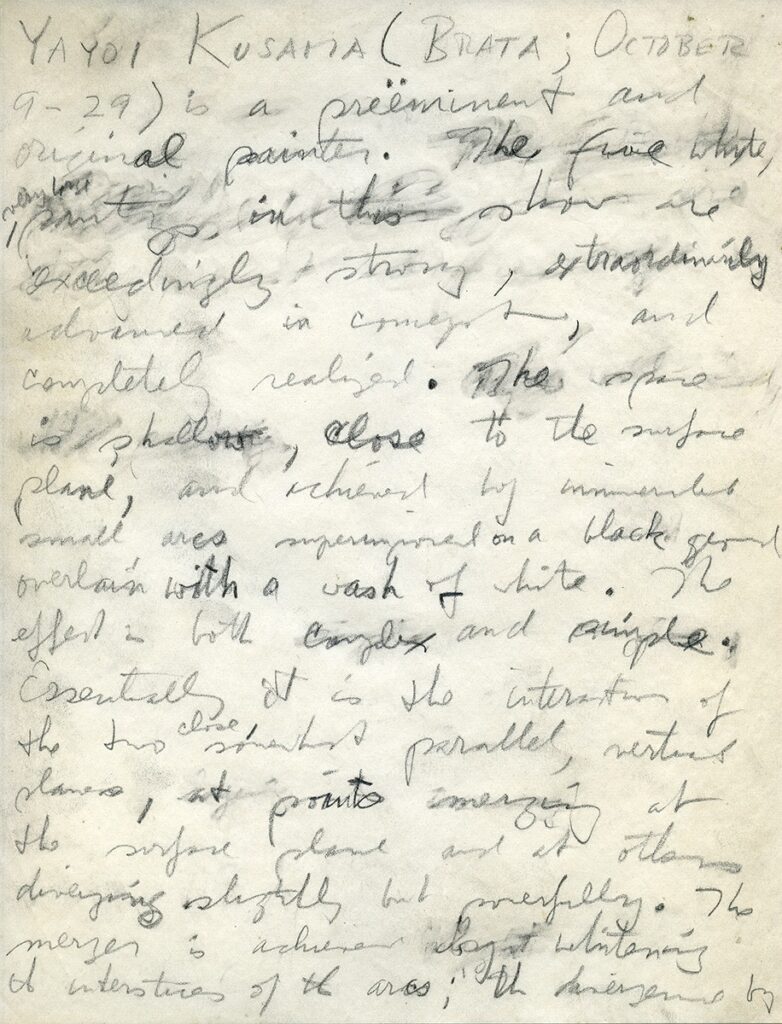
Draft of Donald Judd review of Yayoi Kusama’s Brata Gallery show, October 1959 (page one of two)
The review begins: “Yayoi Kusama is an original painter.” Describing his first meeting with Kusama at her studio, Judd said, “I thought that the paintings were terrific and I wrote that all down… As I said in the review, they were the best paintings being done. Or at least the best paintings that were new in any way, I mean besides from Newman and Rothko and older people.”
The Brata Gallery show contained five paintings from her Infinity Net series. In a text titled, “Post-War Reflection,” Kusama writes, “My Works are usually painted flat on undivided space so that each microscopic mass is followed by another and its surface has a concrete appearance when looked upon as a whole showing a group of remarkably vast masses. By repeating this point action, one by one, I add limitless concreteness to the space with layers of white oils.” From the Brata Gallery exhibition, Judd purchased one of the paintings for $200, which he paid for in four installments. As Kusama wrote in her autobiography, “Donald Judd was my first close friend in the New York art world and he was the first to buy one of the pieces in the exhibition.” Through these initial encounters, Kusama and Judd developed a decades-long friendship, which can be seen in the correspondence found in the Judd Foundation Archives.
In the early 1960s, Kusama began seeking permanent resident status in the United States and with the help of friends like Judd, she was granted permanent residency in 1963. In his letter to the United States Immigration and Naturalization Service (INS) in 1961, Judd wrote, “In October of 1959 Yayoi Kusama exhibited five large paintings which were recognized as exceptional. Sidney Tillim, writing in Arts, predicted that the show would prove the sensation of the season. It did prove to be so and has remained one of the few important shows of the last two years.”
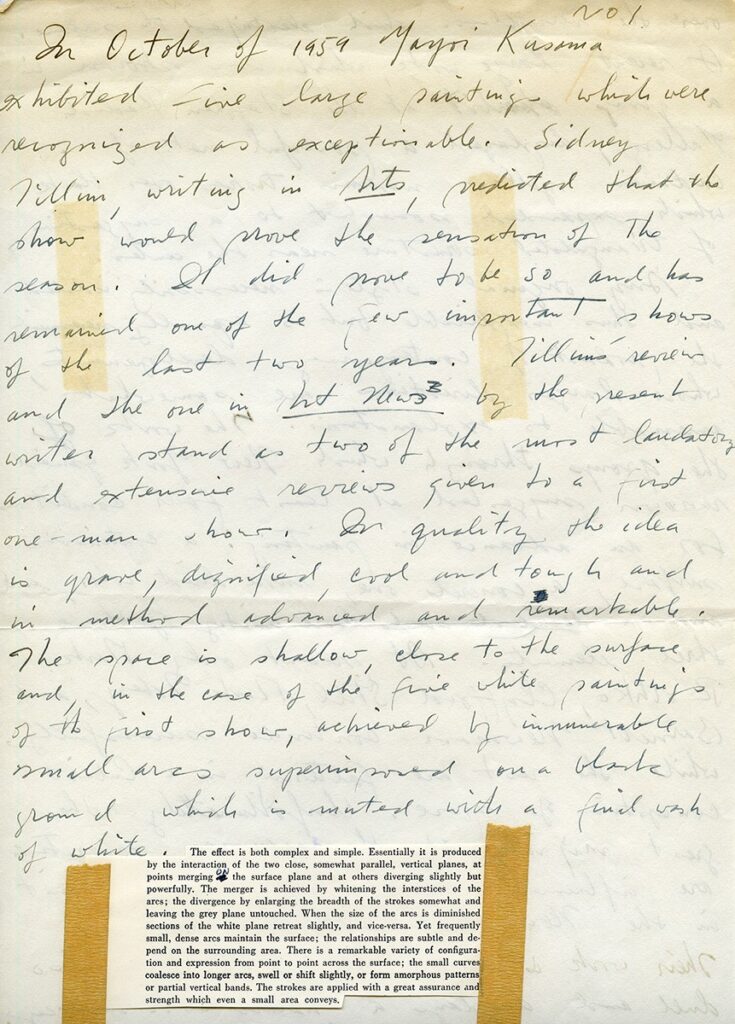
Donald Judd, draft of a recommendation for Kusama to the United States Immigration and Naturalization Service, 1961 (page one of three)
In addition to their friendship and their support for each other’s work, Judd and Kusama became neighbors, living and working on different floors of a building at 53 East 19th Street. “The fourth floor became vacant and she told me about it,” Judd recalled in a 1988 interview. “And so I got the loft and I lived there for 10 years or more because of her. So she was the neighbor downstairs . . . I lived and worked there on the top floor and they were on the next floor and then the second floor was a tailoring business and the first floor was a woolen business so there were only two tenants.”
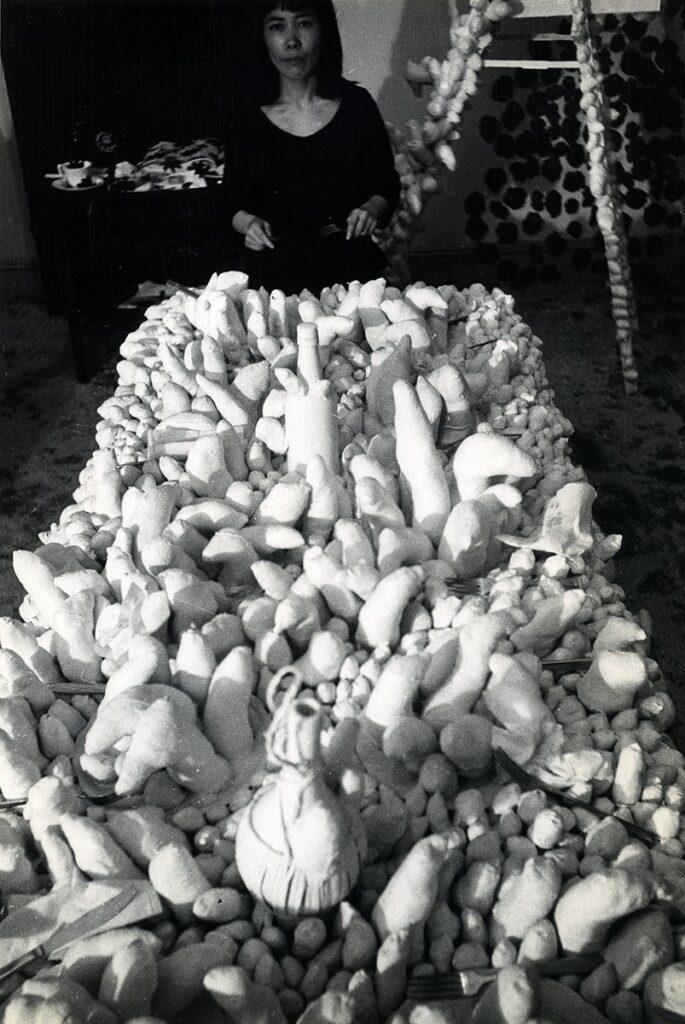
Yayoi Kusama in her studio c. 1963 by Rudolph Burckhardt
Of Kusama’s work ethic at the time, Judd noted:
“She worked very hard. She worked obsessively… She’d work right through the night as far as I can tell… Most paintings were done in one shot. I couldn’t understand how she could do it. She would start in the corner and go across. On the 40 foot painting you can tell that it was probably rolled up and she would start it at one edge and go across it.”
On visits to Kusama’s studio, Judd would sometimes help her in the process of stuffing her soft sculptures, including Accumulation no. 1, an assemblage that includes an armchair with stuffed phallic protrusions, seen here at the Green Gallery, New York in 1962.
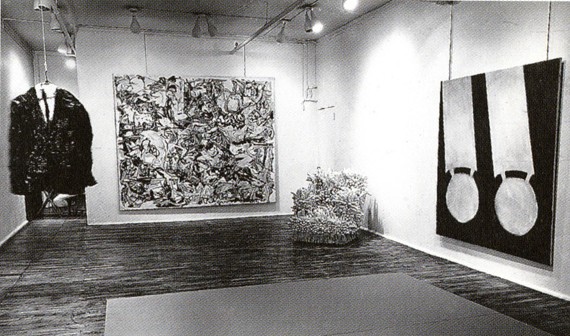
Yayoi Kusama’s Accumulation No. 1. soft sculpture exhibited in a group show at Green Gallery, New York, 1962. © 2012 Yayoi Kusama. Courtesy Yayoi Kusama Studio Inc.
Although both Judd and Kusama eventually moved out of their lofts on East 19th Street, with Judd moving to 101 Spring Street in the Winter of 1969, they continued their friendship. In 1974, Kusama gifted Judd with a set of carpentry tools including a Nokogiri (Japanese saw) and an Ono (a traditional Japanese wood cutter). In February 1978, Judd visited Kusama while in Japan for an exhibition of his at Galerie Watari, Tokyo.
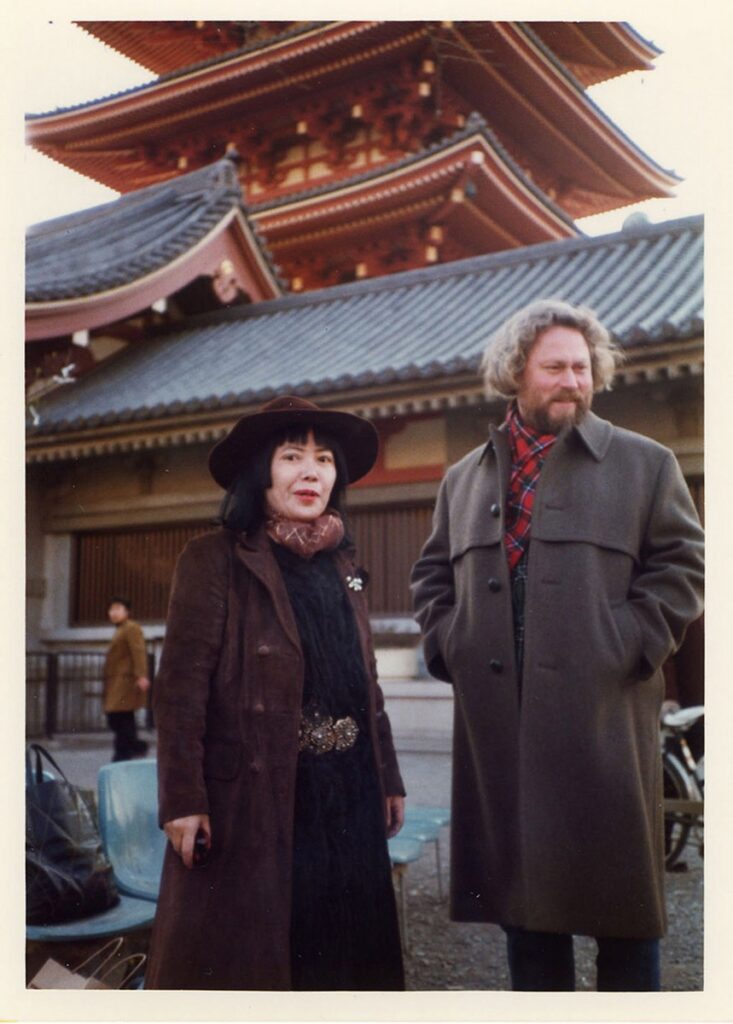
Yayoi Kusama and Donald Judd in Japan, 1978; Letter from Yayoi Kusama to Donald Judd, March 21, 1978
In a letter dated March 21, 1978, sent after this recent trip, Kusama wrote:
The thing [that] delighted me most was to see that you had become a truly mature and profound artist. (I hope I have matured as you have). I am proud of your brilliant achievements. I know we cannot escape from getting older, and I feel strongly that we should make our utmost efforts in creating our best works while we can.
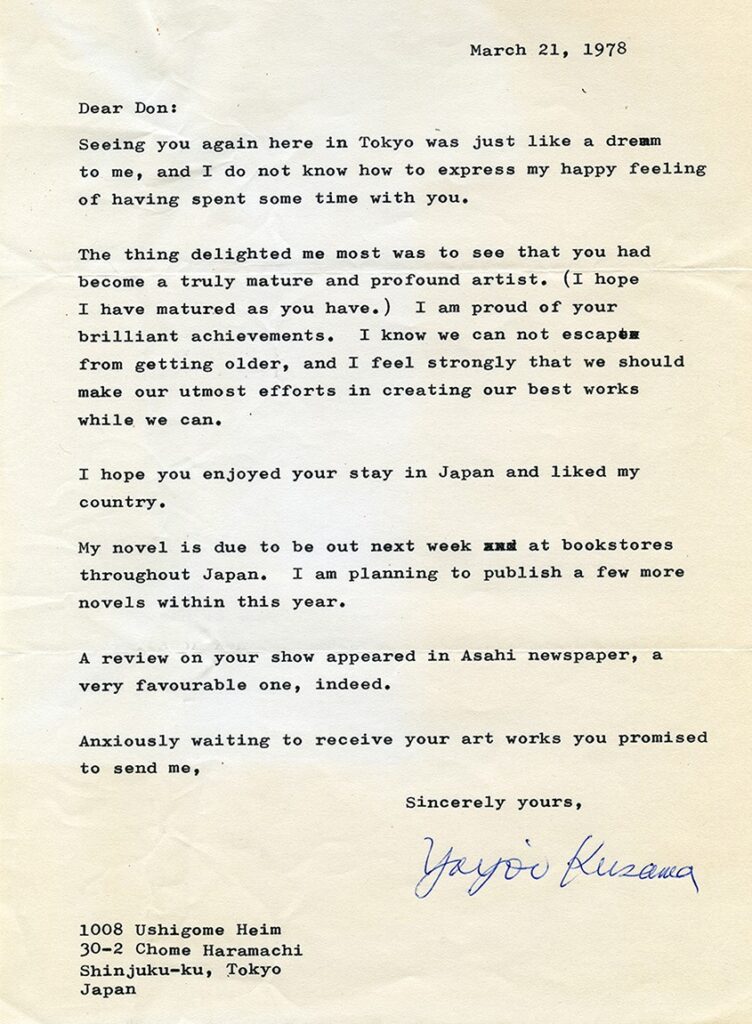
Letter from Yayoi Kusama to Donald Judd dated March 21, 1978
From the 1970s onward, Kusama kept Judd apprised of new works and exhibitions through photographs which she sent to him at 101 Spring Street.

Unidentified exhibition of works by Yayoi Kusama, 1980
Over the course of his life, Judd had at least five works by Kusama in his collection: two Infinity Net paintings (one 6 x 10 feet, the other about 35 x 28 inches), a large floor sculpture, and a box work. In addition, as Kusama notes in this letter to Judd dated June 26, 1974, she gifted Judd a small red sculpture that he placed in his library at La Mansana de Chinati/The Block in Marfa, Texas.
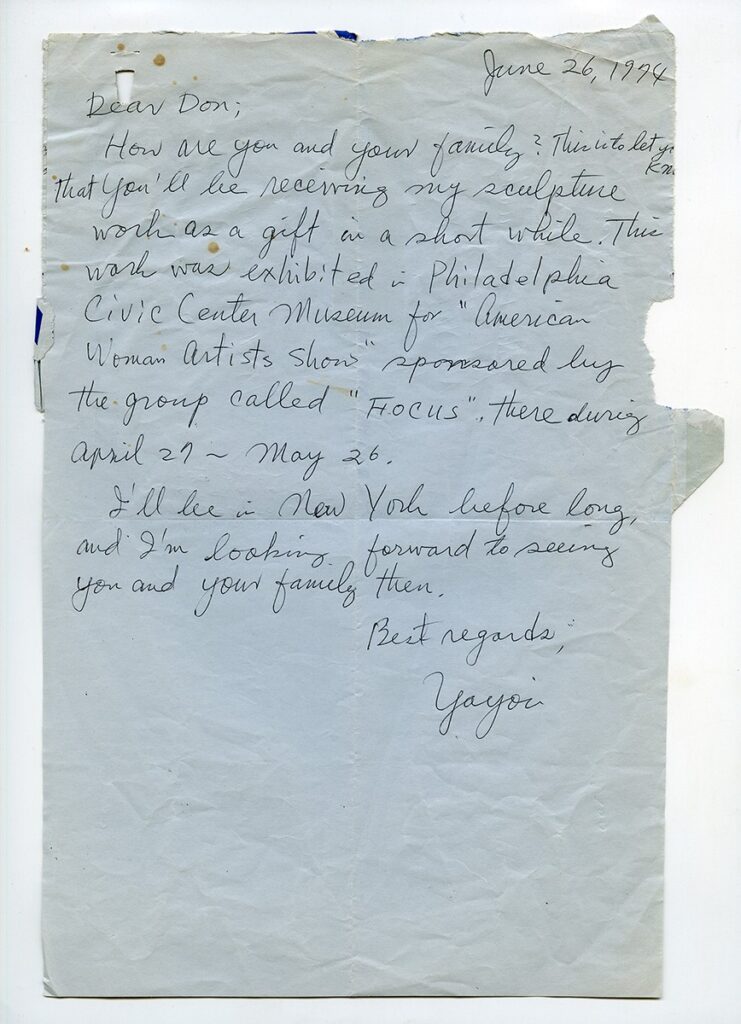
Letter from Yayoi Kusama to Donald Judd dated June 26, 1974

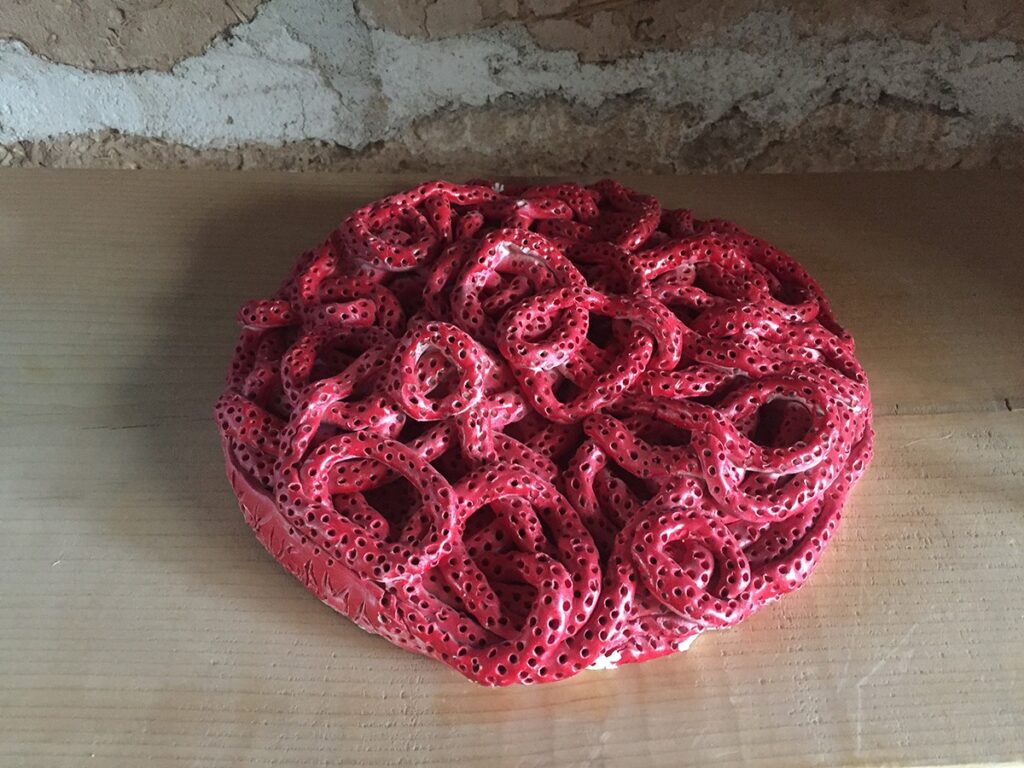
Work by Yayoi Kusama given to Donald Judd and installed at The Block/La Mansana de Chinati, 1974
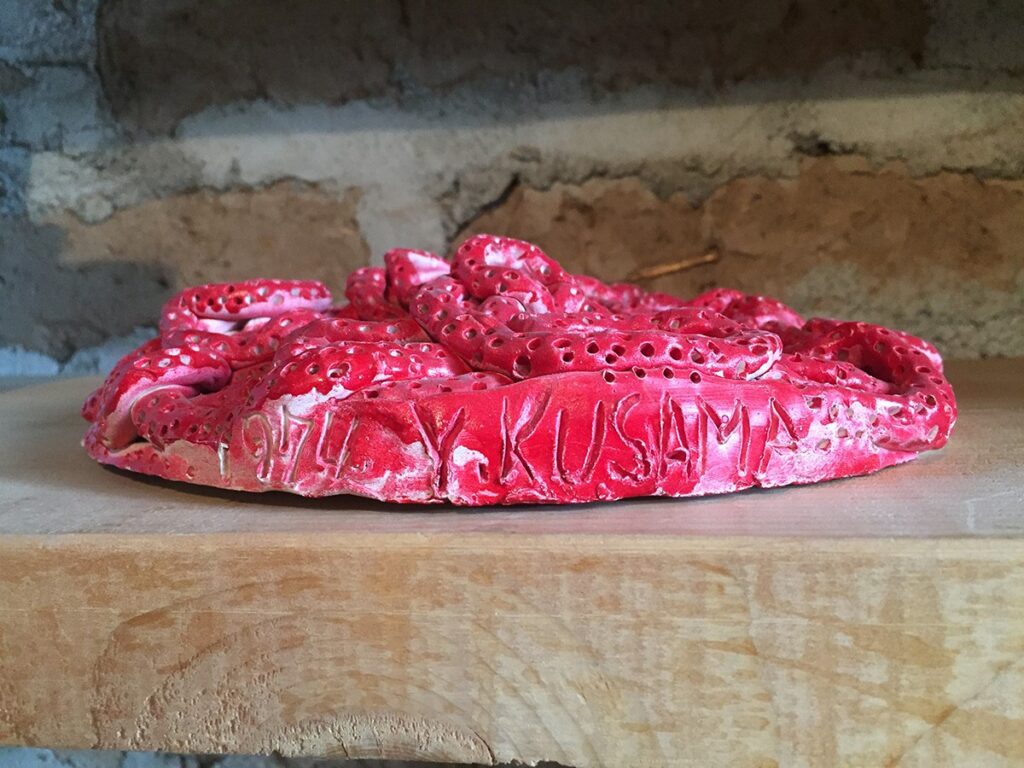
Work by Yayoi Kusama given to Donald Judd and installed at The Block/La Mansana de Chinati, 1974
In addition, Judd also owned Kusama designed dresses that were at one point in the library on the third floor of 101 Spring Street.
Opening September 23, 2017 on the ground floor of 101 Spring Street, is an exhibition of recent and new works from Kusama’s ongoing Infinity Net series. The exhibition will be accompanied by a series of public programs that explore Judd’s relationship with his contemporaries in New York from the 1960s through the 1980s.